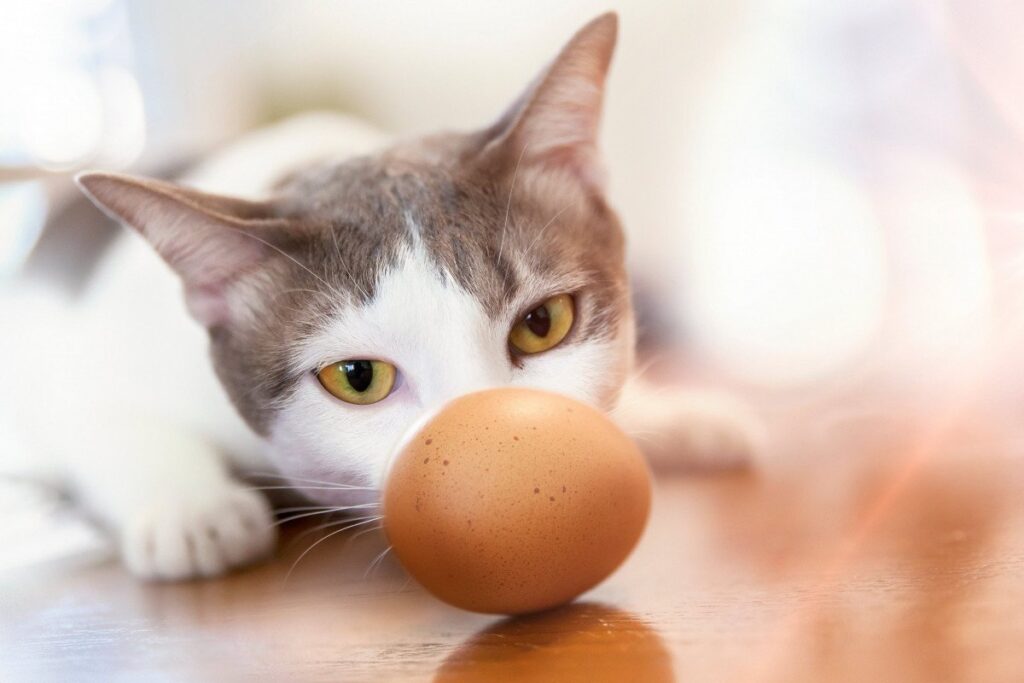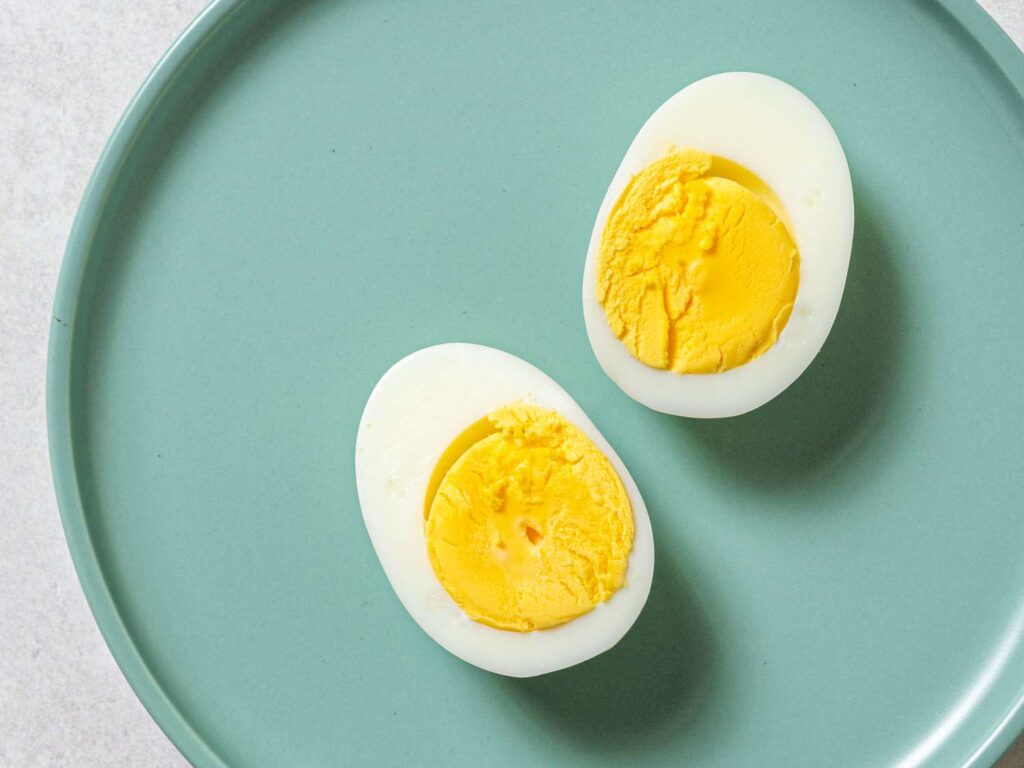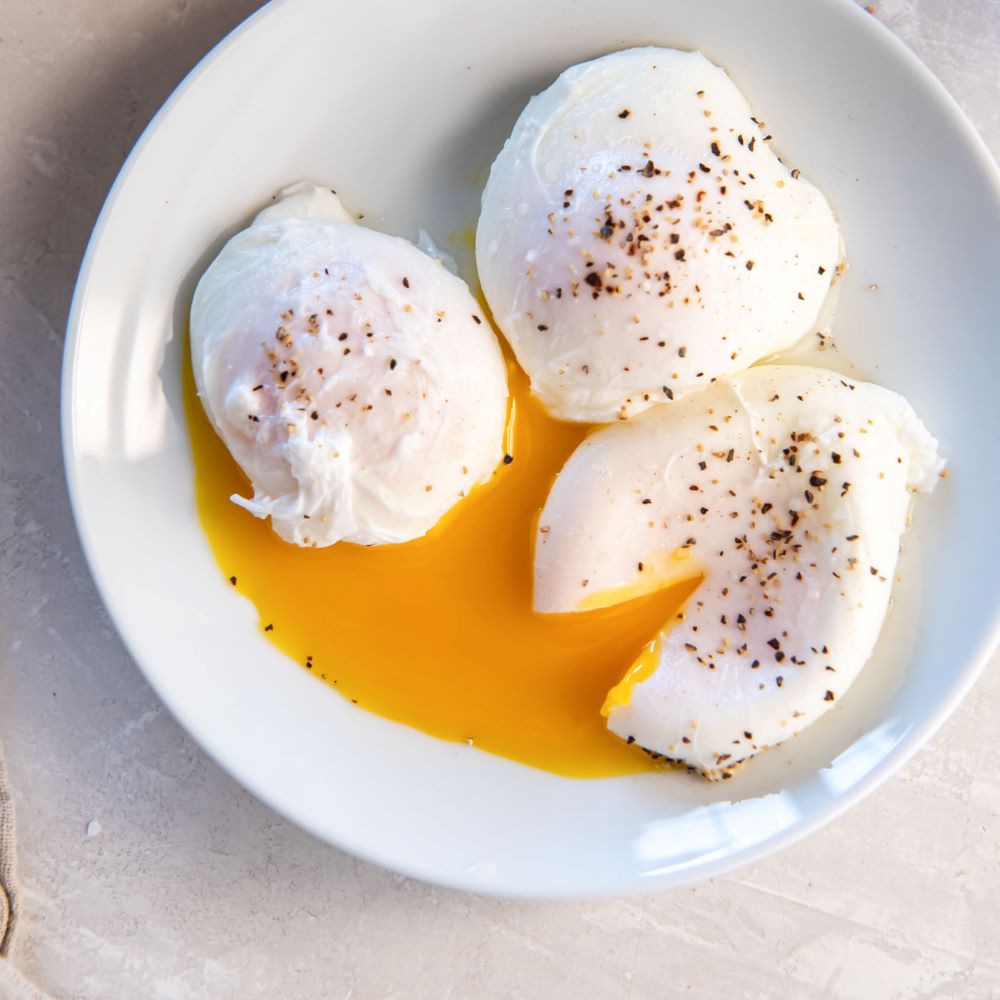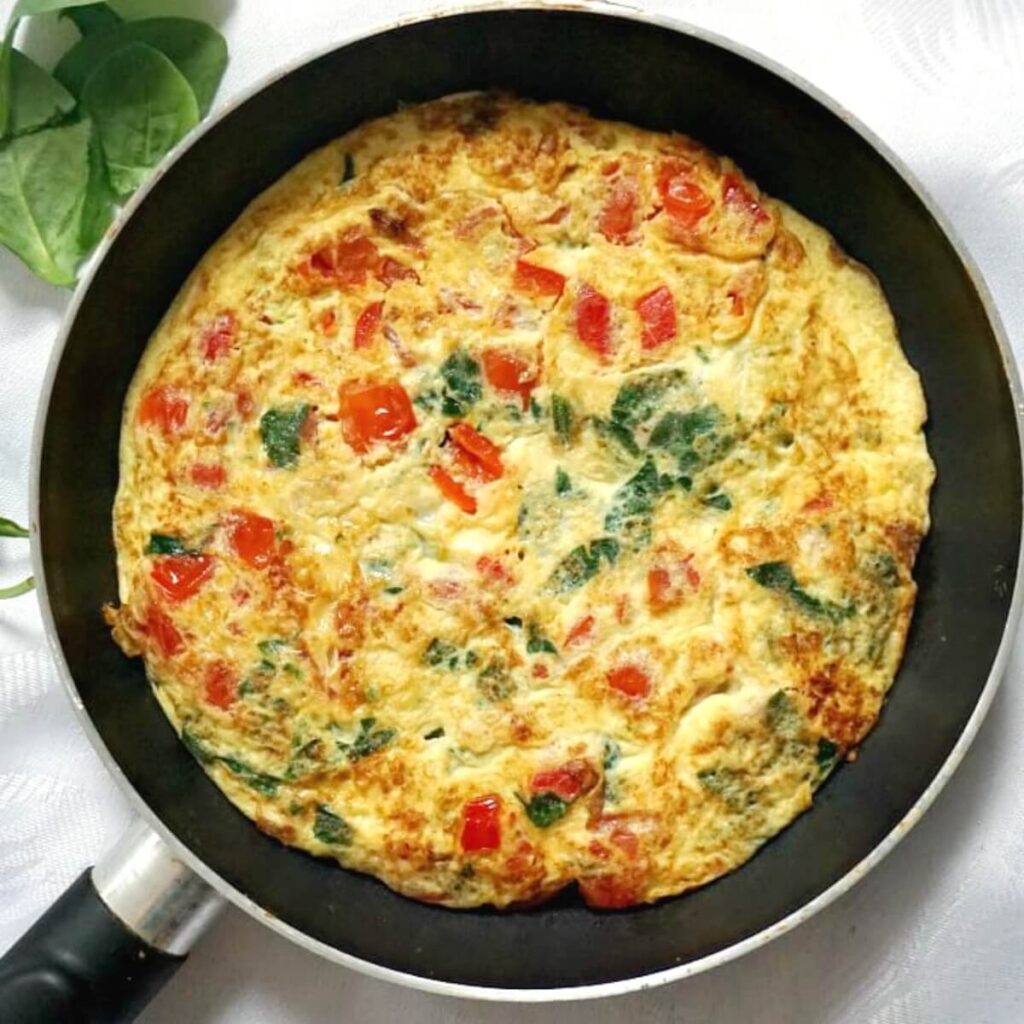5 Best Methods to Cook Eggs For Cats

Eggs have long been recognized as a nutritious and versatile food for humans, but their benefits extend beyond our plates. As pet owners, we often strive to provide the best nutrition for our pet cats, and eggs can play a vital role in their diet as well. Packed with high-quality protein, essential amino acids, vitamins, and minerals, eggs offer numerous health benefits for cats. However, it’s crucial to handle eggs with care and cook them properly to eliminate the potential risks associated with raw eggs.
Advantages of Cooking Eggs For Cats
Adding cooked eggs into your cat’s diet can be a healthy and beneficial choice, offering a variety of advantages:
- Excellent Source of High-Quality Protein: Cooked eggs provide the essential amino acids necessary for muscle development, growth, and repair in cats.
- Abundance of Vitamins and Minerals: Eggs are packed with essential nutrients such as vitamin A, promoting healthy vision and immune function, vitamin D for calcium absorption and bone health, and vitamin E, acting as an antioxidant. Additionally, eggs contain minerals like iron, selenium, and phosphorus, crucial for various bodily processes and for maintaining healthy bones.
- Promotes Skin and Coat Health: The omega-3 fatty acids found in eggs nourish the skin, reduce dryness, and enhance coat quality. By incorporating cooked eggs into your cat’s diet, you can contribute to a shiny and lustrous coat while minimizing the risk of skin irritations and itchiness.
- Digestive Benefits: Cooked eggs are easily digestible for cats, aiding in efficient nutrient absorption and supporting a healthy digestive system. The high-quality protein and amino acids in eggs contribute to proper bowel movements and serve as a gentle source of nutrition for cats with sensitive stomachs or digestive issues.
5 Methods to Cook Eggs for Cats
When it comes to cooking eggs for your feline friend, there are several methods you can use to provide them with a nutritious and delicious meal. Each method offers its own advantages and can be tailored to suit your cat’s preferences and dietary needs. Let’s explore the five best methods for cooking eggs for cats:
Method 1: Hard-Boiled Eggs

Hard-boiled eggs are a simple and nutritious treat that you can prepare for your feline companion. Follow these easy steps to make hard-boiled eggs for your cat:
Ingredients:
- Fresh eggs
- Water
Instructions:
- Place the desired number of eggs in a saucepan and add enough water to cover them completely.
- Place the saucepan on the stove and bring the water to a boil over medium-high heat.
- Once the water reaches a rolling boil, reduce the heat to low and let it simmer gently for about 8-10 minutes. This will ensure that the eggs are fully cooked but not overcooked.
- While the eggs are simmering, you can prepare an ice bath by filling a bowl with cold water and ice cubes.
- After the eggs have cooked for the recommended time, carefully remove them from the heat and transfer them to the ice bath. Let them cool for a few minutes to stop the cooking process and make them easier to handle.
- Once the eggs have cooled, gently tap them on a hard surface to crack the shell. Peel off the shell, ensuring that all the shell fragments are removed.
- Cut the hard-boiled eggs into small, cat-friendly pieces or mash them with a fork for easier consumption.
- Serve the hard-boiled eggs as a special treat or incorporate them into your cat’s regular meals.
Hard-boiled eggs offer easily digestible protein and are rich in essential vitamins such as vitamin A, vitamin D, and B-complex vitamins. By including hard-boiled eggs in your cat’s diet, you can provide them with a wholesome and nutritious source of nourishment. Remember to remove the shell and cut the eggs into manageable pieces for your cat’s safety and enjoyment.
Method 2: Scrambled Eggs

Scrambled eggs are a delicious and nutritious option for preparing eggs for your feline friend. Follow these simple steps to make scrambled eggs for your cat:
Ingredients:
- Fresh eggs
- Optional: low-sodium broth, cooked vegetables (carrots, peas)
Instructions:
- Crack a few eggs into a bowl and whisk them until they are well combined. This will ensure a smooth and fluffy texture.
- Heat a non-stick pan over low heat. It’s important to use low heat to prevent the eggs from overcooking.
- Pour the whisked eggs into the pan and gently scramble them using a spatula. Continue stirring the eggs until they are fully cooked but still moist. Be careful not to overcook the eggs, as this can result in a dry texture.
- If desired, you can add a small amount of low-sodium broth to the scrambled eggs to enhance the flavor and provide extra moisture. Additionally, consider mixing in finely chopped cooked vegetables like carrots or peas to introduce added nutrients and variety to the dish.
- Once the scrambled eggs are cooked to your desired consistency, remove them from the heat and let them cool for a few minutes before serving.
- Serve the scrambled eggs in a cat-friendly dish or incorporate them into your cat’s regular meals as a tasty and nutritious addition.
Scrambled eggs offer a soft and moist texture that is easy for cats to chew and digest. They can be particularly beneficial for cats with dental issues or those who prefer a softer consistency. Adding a small amount of low-sodium broth or cooked vegetables can enhance the nutritional value of the scrambled eggs, providing additional flavors and essential nutrients. By preparing scrambled eggs for your cat, you can offer them a wholesome and satisfying meal option.
Method 3: Poached Eggs

Poached eggs offer a tender and moist texture that cats can enjoy while benefiting from the natural nutrients of the eggs. Follow these steps to prepare poached eggs for your feline companion:
Ingredients:
- Fresh eggs
Instructions:
- Fill a saucepan with water and bring it to a gentle simmer over medium heat. The water should be hot but not boiling vigorously.
- Crack each egg into a small bowl or ramekin, taking care to keep the yolks intact.
- Using a spoon, create a gentle whirlpool in the simmering water. This will help the egg whites wrap around the yolks.
- Carefully slide each egg into the center of the whirlpool. The swirling motion of the water will help shape the poached eggs.
- Allow the eggs to cook undisturbed for about 3-4 minutes. This will result in set whites while maintaining soft yolks.
- Using a slotted spoon, carefully remove the poached eggs from the water. Place them on a paper towel or a clean plate to drain excess water.
- Let the poached eggs cool for a few minutes before serving them to your cat.
Poached eggs are easily digestible for cats and can be an excellent choice for those with sensitive stomachs. They provide essential amino acids that support overall health, including a healthy coat and skin. Ensure the poached eggs have cooled adequately before offering them to your feline companion. By serving poached eggs, you can provide a tasty and nutritious treat that your cat will enjoy.
Method 4: Baked Eggs

Baked eggs provide a unique texture and flavor that can add variety to your cat’s diet while retaining the nutritional value of the eggs and any additional ingredients. Follow these steps to bake eggs for your feline companion:
Ingredients:
- Fresh eggs
- Optional cat-friendly ingredients such as cooked chicken, fish, or finely chopped vegetables
Instructions:
- Preheat your oven to 350°F (175°C) and lightly grease a baking dish to prevent sticking.
- Crack the eggs directly into the greased baking dish. If desired, you can add small amounts of cat-friendly ingredients like cooked chicken, fish, or finely chopped vegetables to enhance the flavor and nutritional content.
- Place the baking dish in the preheated oven and bake the eggs for about 12-15 minutes. Keep an eye on them and adjust the baking time as needed to achieve the desired consistency. The eggs should be cooked through but still moist.
- Once the eggs are baked to your preference, remove the baking dish from the oven and allow the eggs to cool adequately before serving them to your feline companion.
Baked eggs offer a different experience for your cat, with a texture and taste that can be enjoyed as a treat or as part of their regular meals. Remember to consider your cat’s dietary needs and preferences when adding additional ingredients. By serving baked eggs, you can provide a nutritious and flavorful option that your cat will appreciate.
Method 5: Omelette

Omelettes offer a versatile and customizable way to cook eggs for your cat, allowing you to incorporate ingredients that cater to their taste buds and nutritional needs. Follow these steps to create a cat-friendly omelette:
Ingredients:
- Fresh eggs
- Small amount of water or low-sodium broth
- Safe fillings such as cooked and finely chopped chicken, turkey, or vegetables
Instructions:
- In a bowl, whisk the eggs and add a small amount of water or low-sodium broth to create a smooth mixture.
- Heat a non-stick pan over low heat and pour the egg mixture into the pan, ensuring an even distribution.
- As the eggs begin to set, you can add safe fillings such as cooked and finely chopped chicken, turkey, or vegetables. Avoid using ingredients like onions, garlic, or certain spices that can be harmful to cats.
- Fold the omelette in half and continue cooking until the eggs are fully set, ensuring the fillings are heated through.
- Once the omelette is cooked, remove it from the pan and allow it to cool before serving it to your feline friend.
Omelettes provide a balanced and flavorful option for your cat’s mealtime. The customizable nature of omelettes allows you to incorporate a variety of ingredients that meet their nutritional needs. Remember to prioritize the safety of the fillings and avoid any harmful ingredients. With a homemade omelette, you can provide a delicious and nutritious treat for your beloved cat.
Precautions when Feeding Cooked Eggs to Cats
Before you start cooking eggs for your pet cat. Here are some factors you should be mindful of:
- Moderation is Key: While eggs are nutritious, they should not replace a well-balanced feline diet. Eggs should be considered as a supplemental treat or addition to their regular meals. Too much egg consumption can lead to an imbalance in their overall diet.
- Allergies and Sensitivities: Be aware that some cats may have allergies to eggs or be sensitive to certain components. When introducing eggs for the first time, start with a small amount and observe your cat for any adverse reactions. If you notice any concerning symptoms like vomiting, diarrhea, or skin irritation, consult with your veterinarian for guidance.
- Avoid Seasonings and Additives: When cooking eggs for cats, it’s crucial to avoid adding any seasonings, spices, or additives. Cats have sensitive digestive systems, and ingredients like onions, garlic, and salt can be toxic to them. Keep the preparation simple and free from potentially harmful substances. Stick to plain, cooked eggs without any additional flavorings.
- Consult with a Veterinarian: Before making any significant changes to your cat’s diet, it’s always wise to consult with a veterinarian. Each cat is unique, and their dietary needs may vary based on factors such as age, weight, and underlying health conditions. A veterinarian can provide personalized advice and recommendations tailored to your cat’s specific requirements, ensuring that they receive the right amount and type of nutrients from cooked eggs.
Conclusion
Cooking eggs for cats is a fantastic way to enhance their diet with a nutritious and delicious protein source. Whether you choose to hard-boil, scramble, poach, bake, or make omelettes, each cooking method offers unique benefits for your feline companion.
Remember to moderate the amount of eggs you feed your cat and consult with your veterinarian to ensure it aligns with their dietary requirements. By incorporating these best methods into your cat’s meal plan, you can provide them with a wholesome and enjoyable culinary experience while promoting their overall health and well-being.


